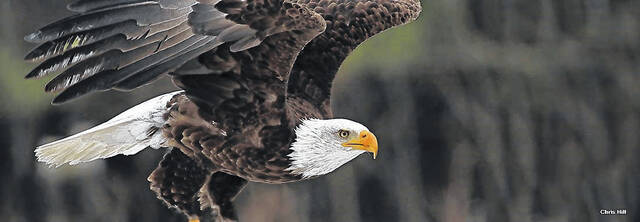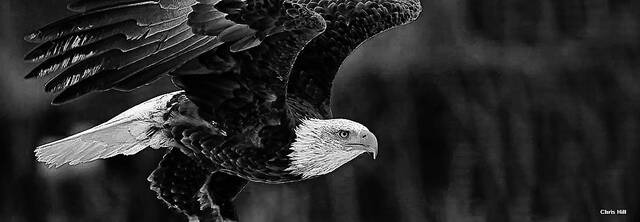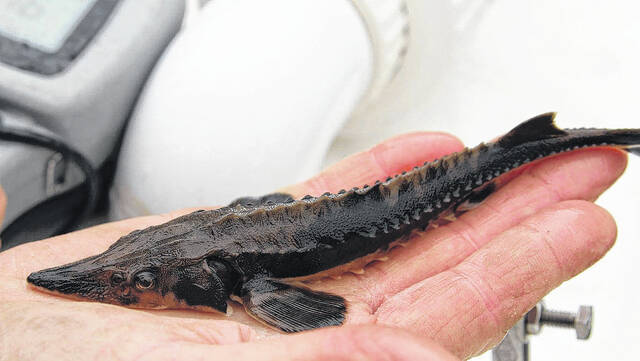This Friday, May 19, is Endangered Species Day, and it also marks the 50th Anniversary of the Endangered Species Act, a landmark piece of legislation that protects and conserves native fish, plants and wildlife and their habitats both domestically and abroad.
Endangered Species Day is a great day to celebrate our natural heritage and learn more about the projects and programs conducted by biologists with the NC Wildlife Resources Commission to protect North Carolina’s native wildlife species and the ecosystems upon which they depend. Their projects and programs benefit not only species that are imperiled but also species that are now common to keep them on the landscape for generations to come. Biologists follow the guidelines set up in the Wildlife Action Plan, which is a comprehensive planning tool developed by the agency to help conserve and enhance the state’s full array of fish and wildlife species and their habitats. Over the years, NCWRC biologists have worked with partners to restore many of our state’s legacy wildlife species — from bald eagles to wild turkeys to Lake Sturgeon and river otters.
Let’s take a closer look at a few of these success stories.
Bald Eagle – One of the most notable success stories of the Endangered Species Act is the bald eagle. This majestic bird — celebrated as the national symbol of the United States since 1872 — had declined throughout North America due to unregulated hunting in the 19th and early 20th centuries, and then later, DDT, a pesticide that resulted in thin eggshells that cracked when bald eagle parents attempted to incubate them. Once DDT was banned, bald eagles started slowly repopulating suitable habitats; however, Wildlife Diversity Program biologists helped them along by implementing a “hacking” program in 1982, which involved raising eagles in captivity and reintroducing them in the wild. While NCWRC biologists no longer raise and release eaglets, they do continue to monitor bald eagle nests and provide technical guidance to landowners on protecting these birds and their nesting sites.
Lake Sturgeon – Due to habitat degradation, barriers to migration, overharvest and pollution, Lake Sturgeon have been extirpated from North Carolina and much of the Southeast United States for more than 50 years. In 2015, the NCWRC joined surrounding states to restore Lake Sturgeon to the Tennessee and Cumberland river systems. Brood stock comes from the Wolf River in Wisconsin, where the U.S. Fish and Wildlife Service (USFWS) works with Wisconsin Department of Natural Resources to collect eggs and milt for transportation and hatching at the Warm Springs National Fish Hatchery in Georgia. After hatching and growing to the late fry stage, Lake Sturgeon fry are sent to the USFWS National Fish Hatchery at Edenton, N.C. and the NCWRC’s Table Rock State Fish Hatchery for several months of grow-out before release. Approximately 2,000-9,000 juvenile Lake Sturgeon have been stocked annually in the French Broad River in Madison County since 2015.
Eastern Wild Turkey – Turkeys once thrived in North Carolina; however, by mid-20th century, few turkeys remained on the landscape — their populations decimated through unregulated and market hunting and habitat destruction across the state. In the 1950s, the NCWRC began a turkey restoration program that involved live-trapping and relocating wild turkeys from sites in North Carolina and other states to areas in the state where turkeys were no longer found. From the 1950s through 2005, NCWRC staff trapped and relocated more than 6,000 wild turkeys to 358 release sites across the state. Because of these efforts, the wild turkey population increased from an estimated 2,000 birds in 1970 to an estimated 265,000 in 2015. Today, wild turkeys are found in all 100 counties, and North Carolina hunters enjoy a robust spring hunting season.
River Otters – Now abundant in North Carolina’s rivers and streams across the state, river otters once were absent entirely from western North Carolina, with the last confirmed sighting occurring in Haywood County in 1936. To restore these playful mammals to their historic range, NCWRC biologists trapped 49 river otters from the eastern part of the state and released them through western North Carolina river systems from 1990 through 1995. Due to these restoration efforts, the otter population is now fully restored in North Carolina and otters are abundant throughout the state.
Wildlife on the Cusp of Disaster
While these species’ success stories are encouraging, many other species are still at risk of becoming endangered and/or threatened.
Endangered species are ones that are at serious risk of extinction, and threatened species are ones that are likely to become endangered in the foreseeable future. While the terms may be different, the outcomes for these animals are the same — vanishing from the landscape forever. Currently, nearly 60 species of birds, aquatic animals, mammals, crustaceans, reptiles and amphibians are state or federally listed as endangered and more than 60 are state or federally listed as threatened with many more listed as state special concern. Another designation, Species of Greatest Conservation Need as defined in the North Carolina State Wildlife Action Plan, identifies animals that need some level of conservation attention BEFORE they become listed.
That’s a lot of wildlife that needs our help.
New hope on the horizon
New legislation is under consideration in Congress. The Recovering America’s Wildlife Act, which, if passed, will provide critical funding for the NCWRC and its partners to help fish and wildlife species in decline. In North Carolina, that funding amounts to more than $25 million annually. Across the country, $1.4 billion would be dedicated annually to fund projects and programs to benefit these species. North Carolina is the first state to have both Senators — Thom Tillis and Ted Budd — in support of RAWA, with legislative support continuing to grow! Learn more about RAWA and threatened and endangered species in the Tar heel state.
How to help species in need
There are so many ways you can help the NCWRC help our state’s vulnerable wildlife populations. Listed below are just a few. You can:
Take good photos of any native species you see in North Carolina and upload them to iNaturalist, ebird and other citizen science community websites/apps to help the NCWRC track animal populations over time.
Volunteer with the NCWRC by monitoring sea turtles and shorebirds along the coast, participating in bat surveys through the NC BAMP – Bat Acoustic Monitoring Program, and enhancing aquatic habitat in reservoirs by building and installing fish attractors and establishing native aquatic vegetation and so much more. Learn more about volunteer opportunities with the NCWRC.
Purchase a North Carolina Wildlife Conservation License plate, which features the pine barrens treefrog, which is North Carolina’s state symbol. Funds go toward projects that benefit nongame wildlife and their habitats.
Reduce your use of plastics and make sure any that you no longer need are recycled or disposed of properly.
Keep lights out at night and use bird-friendly glass.
Keep cats under your control when outside, as you do pet dogs.
Donate to the Wildlife Diversity Endowment Fund. Your donation is placed into a fund and the income earned, not the principal, is spent on programs that benefit species not hunted or fished. Nongame projects are primarily funded through donations, and every dollar given to the fund is matched with federal and other grants that more than doubles the donation value.
Donate to the NCWRC’s friends group, NC Wildlife and Outdoor Recreation Foundation (NCWORF), who are collecting donations to match new grant funds awarded to the NCWRC or donations to fund projects covered by RAWA in the future. These projects include research for newly discovered species, native plants, invasives management, and outreach. NCWORF is already accepting donations for some of these projects today, such as the Southeast Bee Atlas, high school native plants outreach, logging of terrestrial gastropod specimens to train the next biologist, and Blue Ridge Snorkel Trail through public access.











